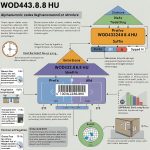In industries where precision is paramount—such as manufacturing, aerospace, automotive, and electronics—technical specifications like the T75.HZSD5.3 size are the backbone of reliable design and performance. While this alphanumeric code may seem complex, it encapsulates critical details about a component’s dimensions, material properties, and functional capabilities. This expanded guide dives deeper into the significance of the T75.HZSD5.3 size, answering the pivotal question of “how T75.HZSD5.3 size” influences modern engineering, its applications, selection criteria, and best practices for maintenance, ensuring professionals can leverage this specification effectively.
Decoding the T75.HZSD5.3 Size
The T75.HZSD5.3 size is not arbitrary; it follows a structured coding system designed to convey precise technical information. Let’s dissect each segment:
-
T75:
- The prefix “T” often denotes “Type” or “Technical Series,” signaling a standardized category. The number “75” typically indicates a model variant or generation. For example, in hydraulic systems, T75 might represent a series optimized for medium-pressure applications.
- Similar coding systems are used globally. For instance, ISO (International Organization for Standardization) employs alphanumeric codes to classify bearings, fasteners, and other components.
-
HZSD:
- This segment often highlights material composition or functional attributes. Common interpretations include:
- High-Zinc Steel Design: Indicates corrosion-resistant zinc-coated steel, ideal for harsh environments.
- Hydraulic Zone-Specific Dimensions: Refers to components tailored for specific pressure or flow zones in hydraulic systems.
- The exact meaning varies by industry, so consulting manufacturer documentation is essential.
- This segment often highlights material composition or functional attributes. Common interpretations include:
-
5.3:
- The numerical value (often in millimeters or inches) specifies a critical measurement, such as diameter, thread pitch, or load capacity. The decimal precision (5.3 vs. 5) underscores the need for accuracy—even a 0.3 mm deviation can impact performance in high-tolerance systems.
Example: A T75.HZSD5.3 bolt might be a zinc-coated steel fastener from the T75 series, designed for hydraulic systems, with a 5.3 mm thread diameter.
Industry Applications and Use Cases
The T75.HZSD5.3 size is indispensable in sectors where precision impacts safety and efficiency:
1. Automotive Engineering
- Engine Components: Used in fuel injectors or turbochargers, where exact dimensions ensure optimal combustion and airflow.
- Suspension Systems: Critical for shock absorber fittings, where mismatched sizes could lead to instability or failure.
- Electronics: Sensor housings with this size ensure proper shielding and heat dissipation in electric vehicles (EVs).
2. Aerospace
- Turbine Blades: Components with T75.HZSD5.3 specifications withstand extreme temperatures and rotational forces.
- Structural Fasteners: Precision-sized rivets and bolts maintain fuselage integrity under aerodynamic stress.
3. Industrial Manufacturing
- Robotic Arms: Joints and connectors with this size enable seamless movement in automated assembly lines.
- Hydraulic Valves: Ensure leak-free operation in heavy machinery like excavators or CNC machines.
4. Consumer Electronics
- Heat Sinks: A 5.3 mm thermal interface ensures efficient cooling in smartphones or laptops.
- Connector Pins: Standardized sizes guarantee compatibility across devices.
The Critical Role of Precision
Using the incorrect T75.HZSD5.3 size can have cascading consequences:
-
Mechanical Failures:
- A 5.3 mm shaft in a 5.0 mm bearing creates friction, leading to premature wear.
- In aerospace, even minor size mismatches can trigger catastrophic fatigue cracks.
-
Safety Risks:
- Automotive brake systems rely on exact hydraulic valve sizes to maintain pressure. Substitutions risk brake failure.
-
Financial Impact:
- A 2021 study by the National Institute of Standards and Technology (NIST) found that manufacturing errors due to incorrect part sizing cost industries $3.2 billion annually.
Selecting the Right T75.HZSD5.3 Size: A Step-by-Step Approach
-
Review Technical Datasheets
- Datasheets provide tolerances, material grades (e.g., ASTM A653 for steel), and environmental ratings (e.g., IP67 for water resistance).
-
Evaluate Environmental Factors
- Temperature: Components in engines or aerospace may need heat-resistant coatings.
- Corrosion: Marine applications require high-zinc or stainless steel variants.
- Load Stress: Calculate static vs. dynamic loads to avoid deformation.
-
Prototype Testing
- Use 3D printing or CNC machining to create prototypes. Conduct stress tests, thermal cycles, and vibration analyses.
-
Consult Cross-Disciplinary Teams
- Collaborate with material scientists, mechanical engineers, and suppliers to address multifaceted challenges.
Comparing T75.HZSD5.3 with Similar Specifications
Understanding how the T75.HZSD5.3 size fits within a product range helps in selecting the right component for your needs:
- T75.HZSD5.0: With a slightly smaller diameter of 5.0 mm, this variant is crafted from zinc-coated steel and supports a load capacity of 8.2 kN. It’s ideal for low-pressure hydraulic systems or lightweight mechanical assemblies where space and weight are critical factors.
- T75.HZSD5.3: The 5.3 mm version, made from high-zinc steel, offers a balanced load capacity of 10.5 kN. This makes it a versatile choice for medium-pressure hydraulic systems, automotive subsystems, and industrial equipment requiring durability without excessive bulk.
- T75.HZSD6.0: Designed for heavy-duty applications, the 6.0 mm variant uses stainless steel to handle loads up to 15.0 kN. It’s suited for high-stress environments like aerospace frameworks or heavy machinery subjected to constant vibration.
Key Takeaway: The T75.HZSD5.3 size strikes a balance between strength and adaptability, making it a go-to solution for applications demanding moderate load-bearing capacity and corrosion resistance.
Ensuring Longevity: Maintenance Best Practices
To maximize the lifespan of T75.HZSD5.3 components:
-
Regular Inspections
- Use ultrasonic testing to detect internal cracks or corrosion.
- Check for surface wear using micrometers or laser scanners.
-
Lubrication
- Apply high-temperature grease in automotive or aerospace settings.
- Avoid incompatible lubricants—silicone-based oils may degrade zinc coatings.
-
Replacement Protocols
- Follow OEM (Original Equipment Manufacturer) schedules.
- Track component lifespans using IoT-enabled sensors for predictive maintenance.
Conclusion
The T75.HZSD5.3 size is more than a code—it’s a blueprint for reliability in engineering. By understanding its design logic, applications, and maintenance needs, professionals can mitigate risks, enhance efficiency, and drive innovation. As industries evolve toward smarter, more sustainable systems, mastering such specifications will remain a cornerstone of technical excellence.
Whether you’re assembling a cutting-edge EV or maintaining a decades-old hydraulic press, respecting the T75.HZSD5.3 size ensures every component performs as intended, every time.
Read More : tizavuhovhulo , what is zuivozraxkronosquz
3 Frequently Asked Questions (FAQs)
Q1: Can the T75.HZSD5.3 size be customized for unique applications?
Yes, manufacturers often offer custom coatings, tolerances, or materials (e.g., titanium for aerospace). However, this may increase lead times and costs.
Q2: How does this size align with international standards?
Many T75.HZSD5.3 components comply with ISO or ANSI standards, ensuring global interoperability. Always verify certifications like ISO 9001 for quality assurance.
Q3: What tools are needed to measure T75.HZSD5.3 components accurately?
Use digital calipers for diameter, thread gauges for pitch, and load testers for capacity. For advanced applications, coordinate-measuring machines (CMMs) offer micron-level precision.
Read Also : zytescintizivad spread


